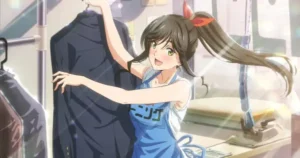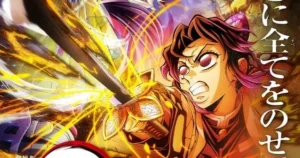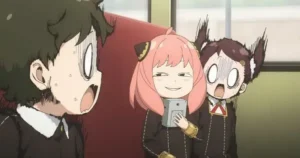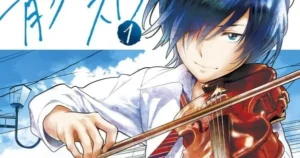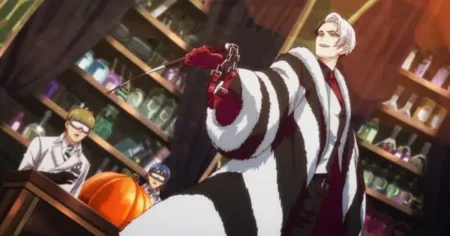The world of Rascal Does Not Dream of Bunny Girl Senpai is no stranger to the inexplicable phenomenon known as Adolescence Syndrome, where the anxieties and insecurities of youth manifest as tangible, often bizarre, physical ailments. While the series title may evoke images of holiday cheer, “Rascal Does Not Dream of Santa Claus” is a common misnomer for the critically acclaimed anime, Rascal Does Not Dream of Bunny Girl Senpai. Episode 7, titled “Adolescence Syndrome, Again,” plunges viewers deeper into these mysterious occurrences, introducing a perplexing new case involving the logical and scientific-minded Rio Futaba. This pivotal episode marks the beginning of a new arc, unraveling the complexities of identity and self-perception through a sci-fi lens.
The Lingering Aftermath and New Beginnings
Following the resolution of Tomoe Koga’s time-looping Adolescence Syndrome, Sakuta Azusagawa looks forward to a more ordinary summer with Mai Sakurajima, his girlfriend. However, the tranquility is short-lived as new mysteries begin to unfold.
A Familiar Face, A New Enigma: Shoko Makinohara’s Return
The episode continues to weave in the enigmatic presence of Shoko Makinohara. Sakuta has taken in a white kitten for Shoko, who continues to visit his home regularly to see the feline. While Mai initially expresses no jealousy towards the seventh-grader, her mature and trusting nature in their relationship is highlighted. The series subtly reinforces the strong bond between Sakuta and Mai, showing them navigating potential relationship stressors with open communication, a refreshing departure from typical anime tropes.
Despite her consistent presence, the mystery surrounding Shoko deepens. This version of Shoko is a middle schooler, a perplexing detail given that Sakuta’s first love interest, also named Shoko Makinohara, was a high schooler. Her apparent lack of memory regarding Sakuta’s past connection to her only adds to the intrigue, setting up a long-term mystery within the series.
The Curious Case of Two Futabas
The central conflict of Episode 7 rapidly shifts focus to Rio Futaba, the intelligent and often reserved science enthusiast of Sakuta’s friend group. Sakuta notices peculiar behavior from Rio, particularly after encountering what appears to be two distinct versions of her.
The Doppelganger Phenomenon
The core of Futaba’s Adolescence Syndrome manifests as a literal doppelganger. Sakuta and Mai spot one Rio entering a net café, while simultaneously the “other” Rio appears to be talking on a phone, though she is not. This startling discovery leads to the revelation that there are, indeed, two Rio Futabas.
The original Rio, distressed by the presence of her counterpart, has been unable to return home because of this phenomenon. Sakuta, in his usual compassionate manner, offers her a place to stay at his apartment. Mai, initially hesitant, decides to join them, leading to some playful banter and a botched attempt at a kiss between her and Sakuta. This shared living situation further emphasizes the growing comfort and affection between Mai and Sakuta.
Unpacking Futaba’s Split Identity
As Sakuta investigates, he confronts the “other” Rio, who appears more fashionable, without glasses, and with her hair tied up. Despite the superficial differences, Sakuta quickly realizes that this “other” Rio shares the same knowledge and behaviors as the Rio he knows. The series suggests that this phenomenon isn’t about a “shell” or incomplete copy, but rather two genuine versions of Futaba.
The theoretical explanation for this doppelganger phenomenon, as posited by Futaba herself, hints at quantum teleportation, suggesting that she might genuinely exist as both people due to self-observation. More profoundly, the split seems to stem from an internal conflict within Rio, where her rational and emotional sides are not in agreement. It’s implied that one version represents a suppressed desire or personality trait, perhaps a more confident or uninhibited self that the original Rio has been holding back. This internal struggle is a common theme in Adolescence Syndrome, where the desire to be a certain way or to escape a part of oneself leads to extreme physical manifestations.
Supporting Characters and Underlying Tensions
Beyond the main mystery, Episode 7 also subtly develops other character arcs and highlights ongoing background tensions.
Kaede’s Continued Struggle
Sakuta’s younger sister, Kaede, who suffers from her own severe Adolescence Syndrome due to past online harassment, remains a central figure in Sakuta’s life. Her trauma has made her unable to leave the house, dependent on Sakuta and confined to her panda onesie. The sound of a phone ringing can trigger her anxiety, stemming from the cyber-bullying she endured. Her loneliness is palpable, and the presence of Mai, Shoko, and now Futaba at the apartment, while initially awkward, provides her with some much-needed companionship.
The Nuances of Relationships
The episode continues to showcase the evolving relationship between Sakuta and Mai. Their interactions are characterized by a unique blend of playful teasing, genuine affection, and deep trust. Mai’s mature response to Shoko’s presence at Sakuta’s apartment further cements their strong bond, demonstrating a refreshing lack of typical romantic drama. The humorous, yet relatable, fumbled attempt at a kiss between them also adds a layer of endearing realism to their dynamic.
Episode 7 of Rascal Does Not Dream of Bunny Girl Senpai masterfully sets the stage for a new arc, introducing a compelling mystery surrounding Rio Futaba’s split identity. By seamlessly integrating this new phenomenon with ongoing character developments and subtle hints at future conflicts, the episode leaves viewers eager to understand the deeper implications of Adolescence Syndrome and the emotional truths behind these fantastical occurrences.

